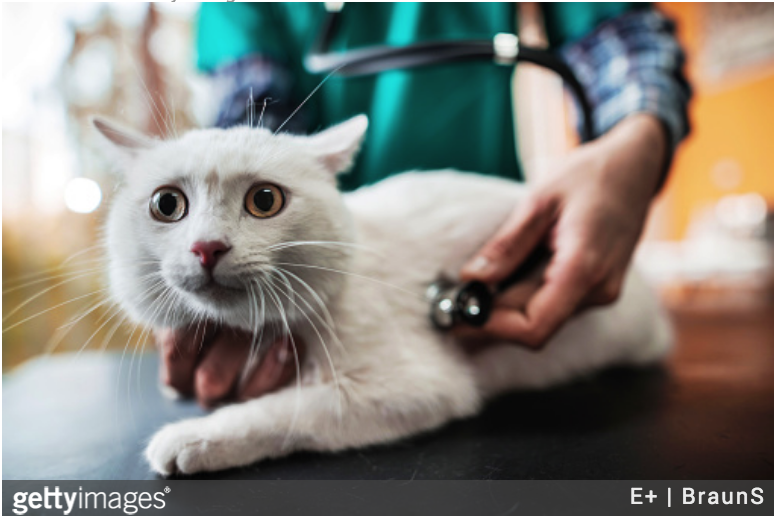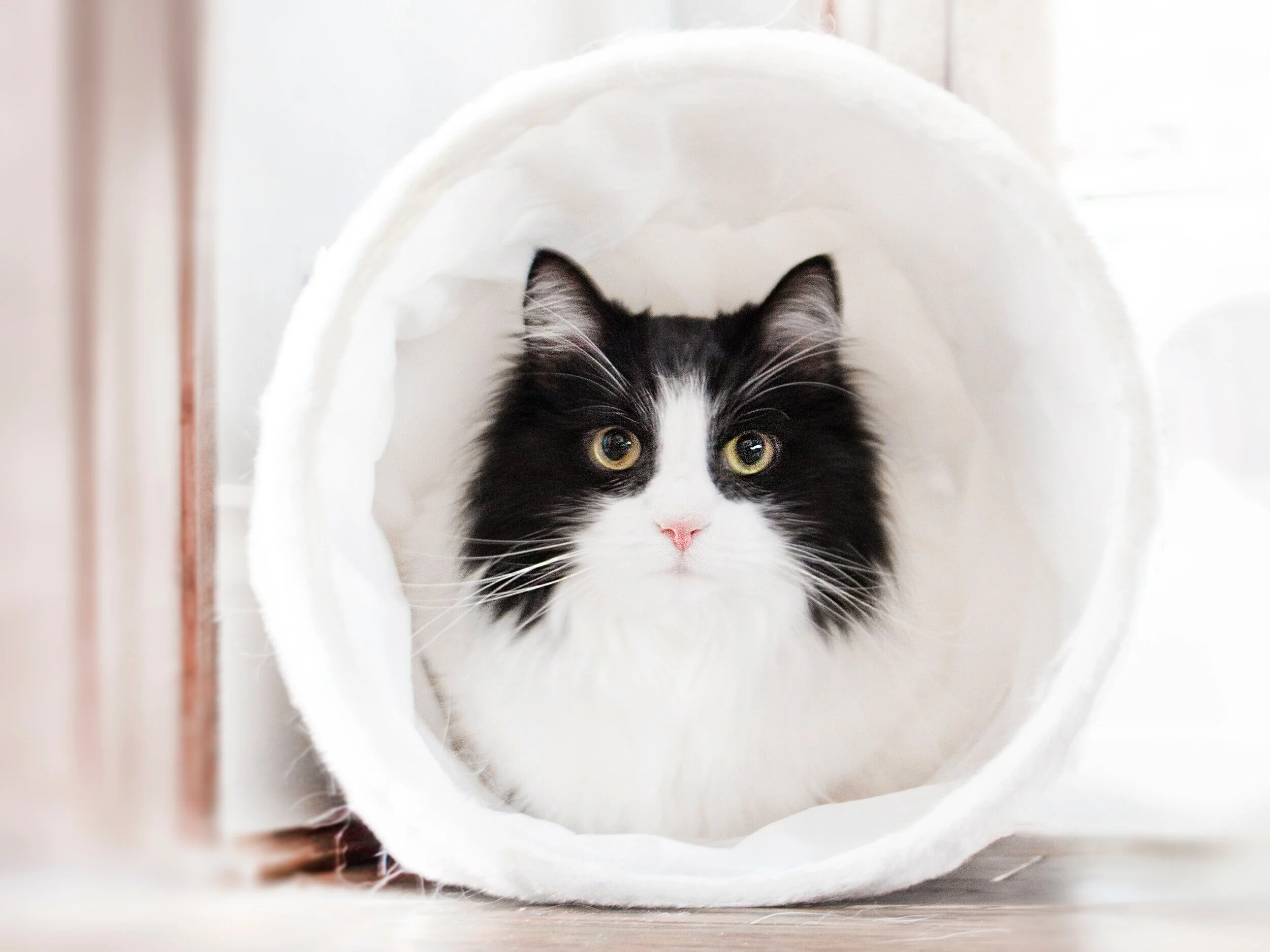Recognising Stress in Your Cat
Home / Gaia Toast / Recognising Stress in Your Cat
Comic credit: Liz Climo
Broadly, there are two types of stress in cats: acute and chronic.
Acute stress is your cat’s reaction to an event or threat (perceived or real).
Chronic stress develops over a period of time. It also results in long-term behavioural problems and even stress-related diseases.
Some cats are more prone to stress than others. Like people, the ability to cope with stress and the response to stress depends on genes and the environment. For example, cats which were not given opportunities to socialise with other people, cats or other pets tend to fare poorer in coping with stress.
Cats that are not exposed to different sights, scents and smells in the home environment will also find it hard to cope with changes. For example, when they are exposed to new environments e.g. a trip to the vet clinic or being boarded.
The signs of stress in cats tend to be more subtle as they do not tend to express their emotions. Cats will usually choose to withdraw from the stressful situation. Still, it is worthwhile for pet owners to recognise the signs and try to help the cat to cope.
Image Credit: Getty Images
Take note of your cat’s body language in these areas:
Body Posture & Tail
Ears
Eyes & Pupils
Whiskers (see image)
Your cat’s whiskers can communicate a range of his emotions. Learn to differentiate the norm from signs of stress.
Vocalisation
What does acute stress and fear in cats look like?
A stressed out cat typically displays a combination of the following signs:
Image Credit: Getty Images
Body posture lower behind than in front with tail down/curled in and close to the body (see image)
Ears are erect and pointed towards the source of stress
Eyes are wide open, pupils partially dilated, with an intent gaze towards the source of stress
Whiskers are sideways or forward
Meowing or grumbling
This can quickly escalate to intense fear where you will see the cat display signs such as:
Image Credit: Getty Images
Body posture is crouched on top of all paws with tail down/curled in and close to the body. This may be accompanied by shivering.Ears are fully flattened back to the head (see image)
Eyes are wide open with pupils fully dilated. This may be accompanied by excessive blinking. (see image)
Whiskers are backwards, flattened against the side of the face as if to protect it
Growling, hissing, drooling. Some cats can be quiet instead of vocalising.
Image Credit: Getty Images
You may also notice other signs such as increased respiratory rate, immobility with very little head movement etc.
Some cats may even make attempts to escape or turn aggressive if approached (see image).
What does chronic stress in cats look like?
Signs of chronic stress are harder to spot as they develop over a period of time and may be confused with symptoms of other diseases. So it is crucial for cat owners to recognise what is normal behaviour in their cats. This will form a good baseline to detect any deviations from your cat's norm.
Some behavioural signs due to chronic stress can include:
Lack of appetite
Increased facial rubbing and scratching on surfaces
Increased territorial spraying
Inappropriate urination or defecation
Lethargy and increased resting
Hiding
Jumpy or easily startled at the slightest noise
Increased aggression towards people, cats or other pets at home
What's the worse that can happen for a stressed-out cat?
Aside from other diseases, we see stressed-out cats developing cystitis or FIC (Feline Idiopathic Cystitis). This is when the cat's bladder becomes inflamed and he displays symptoms such as difficulty urinating, bloody urine etc.
In severe cases, the urinary tract can get completely blocked and that is very painful.
What can be stressing my cat out?
Like people, your cat’s sources of stress can come from the environment or from interacting with other people or other cats/pets. It all comes down to the personality of your cat and what he is used to.
Safe hiding spots can greatly reduce stress in your cat.
For example, very social cats may suffer stress from prolonged periods confined indoors with limited interaction with people or other cats.
Cats that prefer to be left alone on the other hand, may be stressed out by intrusion of their space. For example, when they get grabbed or cuddled suddenly.
Changing routines or restricting their access to basic needs, e.g. obstructing their access to litter trays or safe hiding spots may also cause stress.
So what can I do to help my cat?
Don’t assume or rule anything out. Stress triggers can be as innocuous as a toy which your cat deems threatening, boredom or an increase in the number of neighbourhood cats passing by your corridor.
Image Credit: Getty Images







